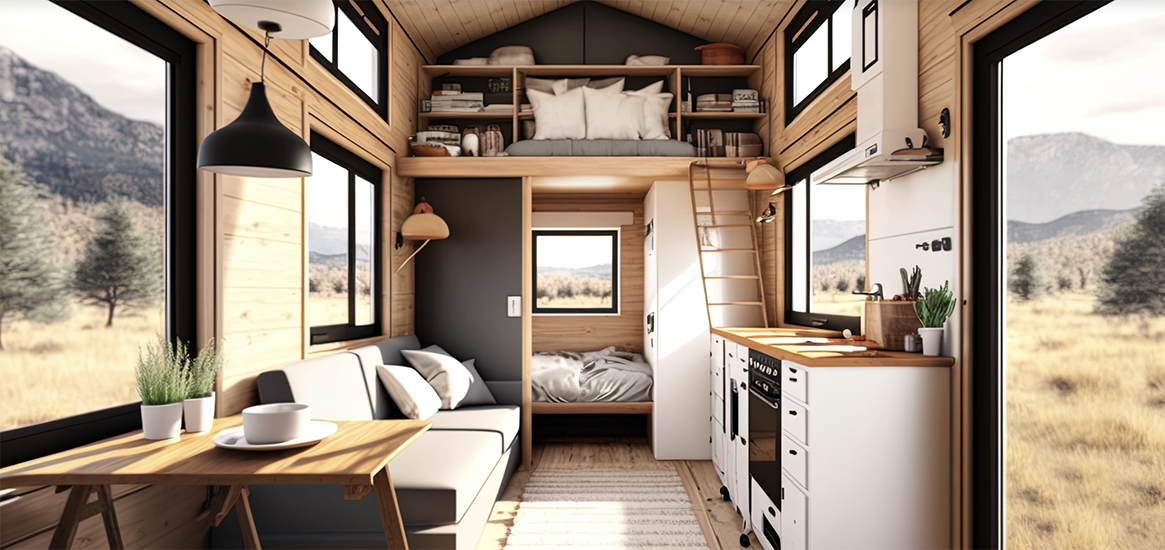High housing costs, urbanization, and growing environmental concerns are driving many individuals towards alternative housing solutions – one such option that’s gaining traction in recent years is tiny homes. The idea of living in compact quarters may seem daunting to some, but tiny homes are proving to be an affordable and eco-friendly solution for many. In this blog post, we’ll explore the role of tiny homes in addressing the issues of housing affordability and environmental sustainability, and analyze some popular tiny home models such as Escape Traveller, Land Ark RV, and Tru Form.
Housing Affordability: With the ever-increasing urbanization, housing supply in metropolitan areas is falling short of demand, and thus, prices are skyrocketing. The millennial generation, especially, is facing an affordability crisis – cramped living, high rents, and low wages are preventing many young adults from moving out of their parent’s homes. Tiny homes, which offer a cheaper and more sustainable alternative, are fast becoming an attractive option. Models such as the Escape Traveller, which costs around $60,000, provide all the necessary amenities for comfortable living despite their small size.
Environmental Sustainability: Ecological threats such as climate change, deforestation, and environmental pollution have become a critical concern, and many people are looking for sustainable living alternatives. Tiny homes are proving to be an eco-friendly solution – they require fewer resources both for construction and maintenance. Many tiny home models, such as the Land Ark RV, are made of sustainable materials and incorporate energy-efficient features such as solar panels and green roofs, which reduce their carbon footprints. This eco-friendliness of tiny homes also speaks to the lifestyle choice of “living with less,” a development that’s becoming increasingly prevalent across generations.
Portability and Flexibility: The concept of tiny homes has gained momentum, not just because of the affordability and sustainability aspects, but also due to their portability and flexibility. Many tiny homes are built on wheels, such as the Tru Form model, which means that they can be moved from one place to another according to the occupant’s preference. This also adds to the flexibility – tiny homes can be used as a primary residence, secondary dwelling, vacation home, or even a commercial property like a café or office. The trend for remote working location-independent lifestyles means that more people are warming up to the idea of moving to tiny homes placed in scenic areas or countryside.
Community and Social Implications: The trend of tiny homes has led to the emergence of tiny home communities where likeminded individuals come together to manage land and resources in a sustainable way. These communities offer social benefits – fostering a sense of community, inclusivity, and intergenerational interaction. Many older people who are downsizing their homes or seeking a simpler life are opting to join tiny home communities and engage with new people. There is also a movement of tiny home villages specifically aimed at housing the homeless, which underscores the solutions that tiny homes can provide to tackle social issues as well.
Challenges and Limitations: Although the idea of tiny homes is viable in theory, there are still limitations and challenges to overcome. One major issue is that of zoning laws and regulations – most areas are yet to recognize tiny homes as a legitimate form of housing. Another issue is the cost factor – though tiny homes are cheaper in comparison to traditional homes, they still require a substantial upfront investment. Finally, some people may find it difficult to adjust to living in a small space, and, thus, it’s essential to carefully consider one’s lifestyle and priorities before making the shift to a tiny home.
Tiny homes represent a growing trend of people looking for solutions to address the challenges of housing affordability and environmental degradation. Although there are still regulatory and cost hurdles to overcome, the viability of the concept means that it’s here to stay. Models such as the Escape Traveller, Land Ark RV, and Tru Form demonstrate how the tiny home movement is empowering people to live a sustainable and affordable lifestyle with minimal environmental impact. By living with less, people are finding more – community, flexibility, and a connection to the earth. Tiny homes offer a window into a new way of thinking about housing and lifestyle and may be an excellent solution in a world filled with uncertainty and change.

